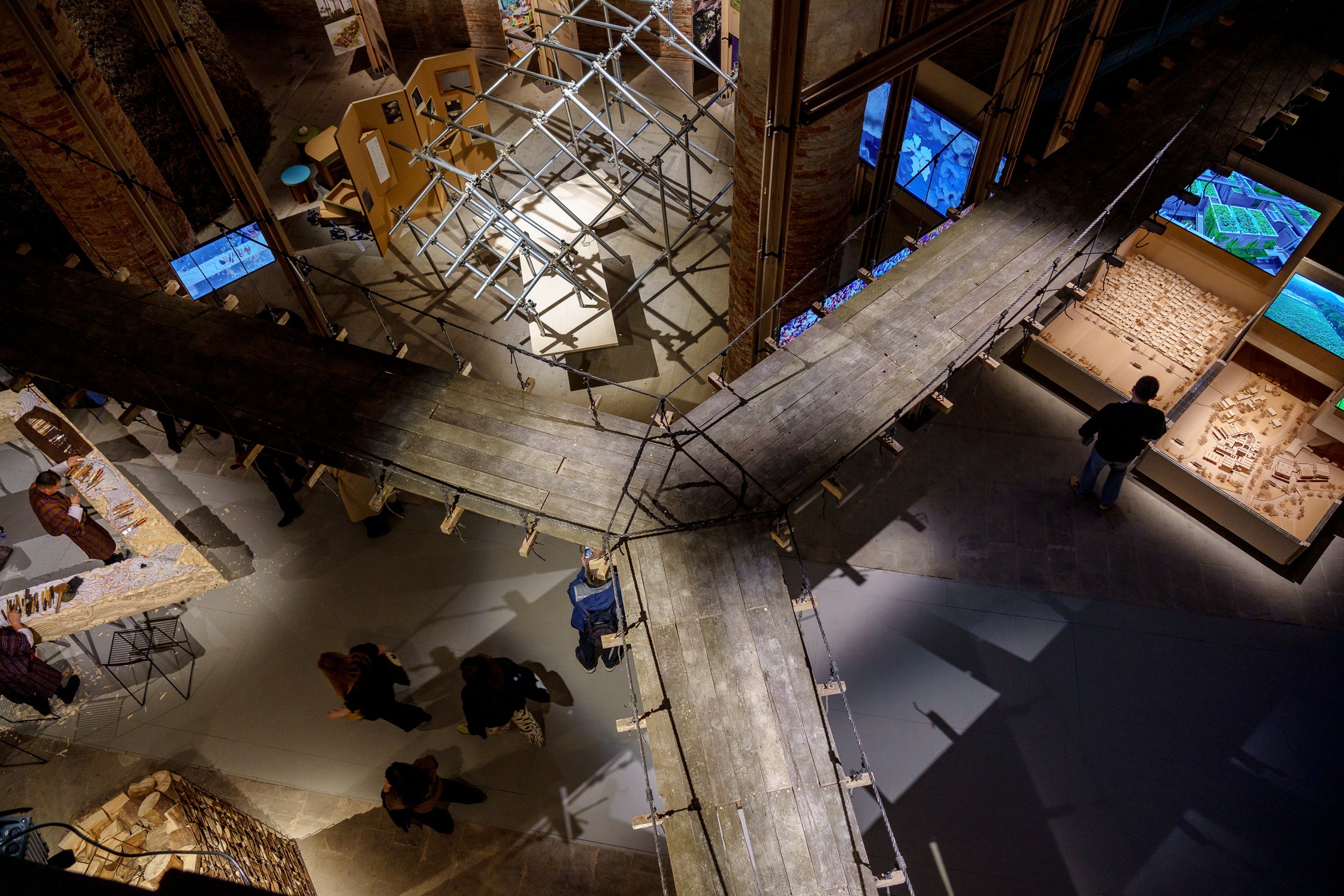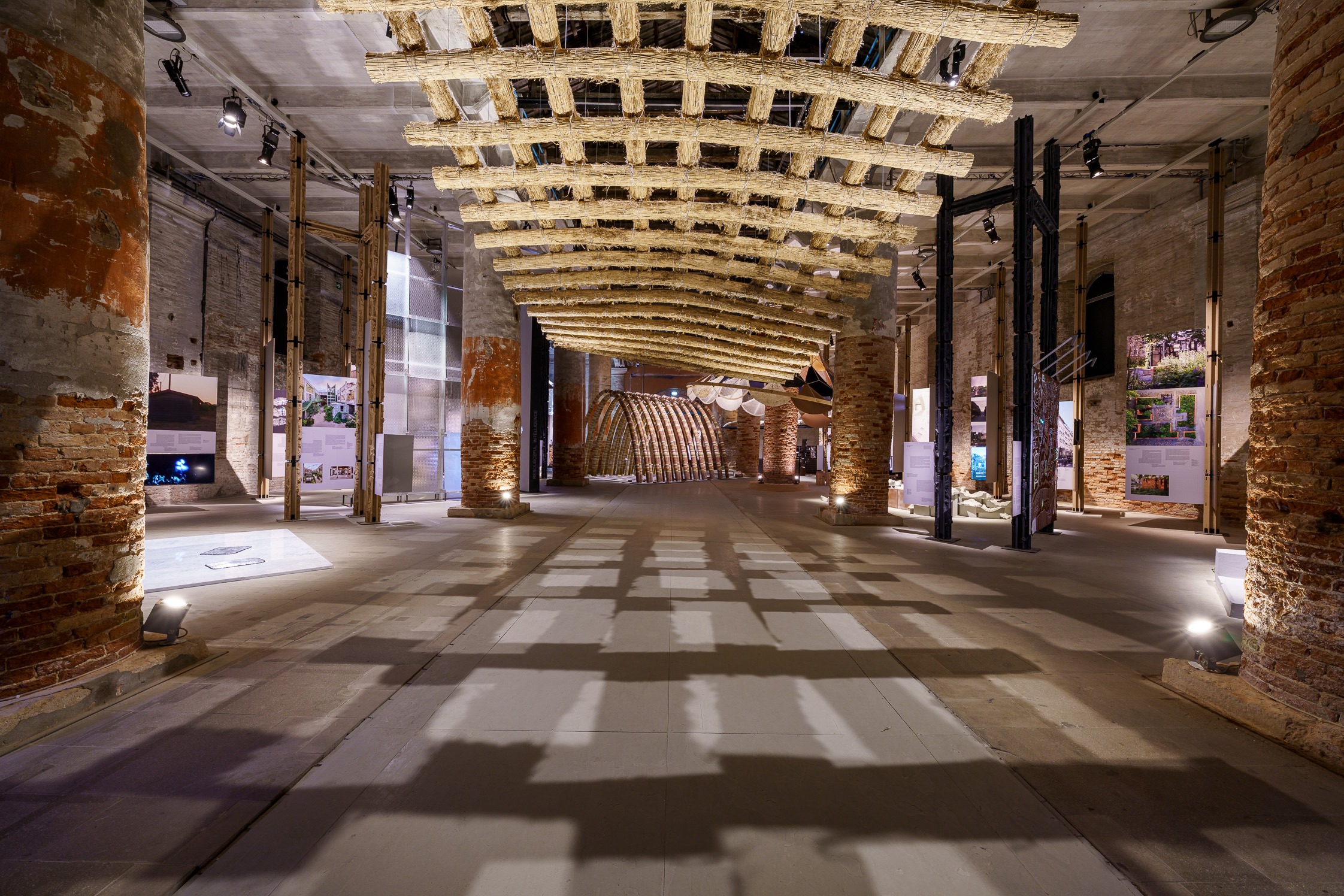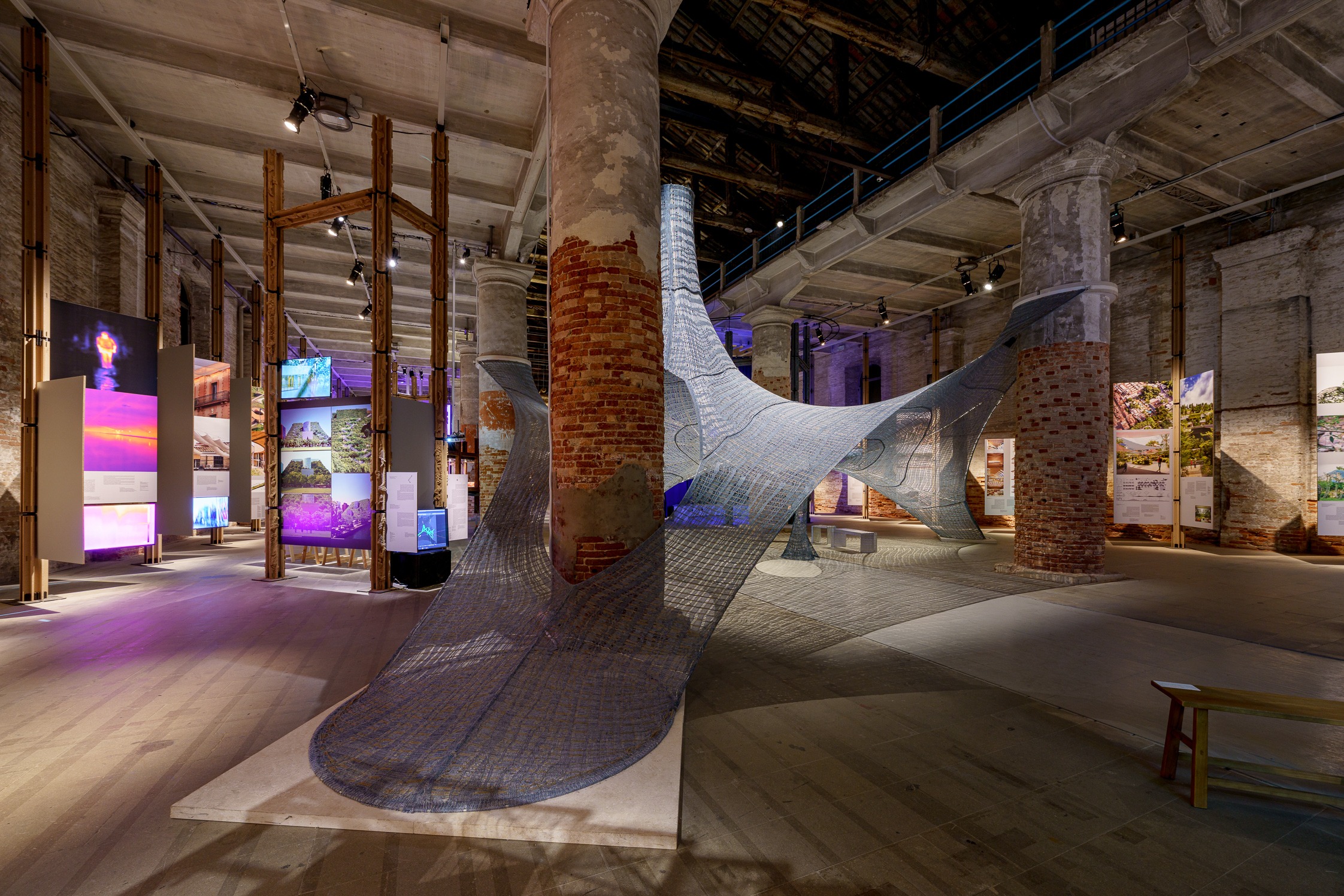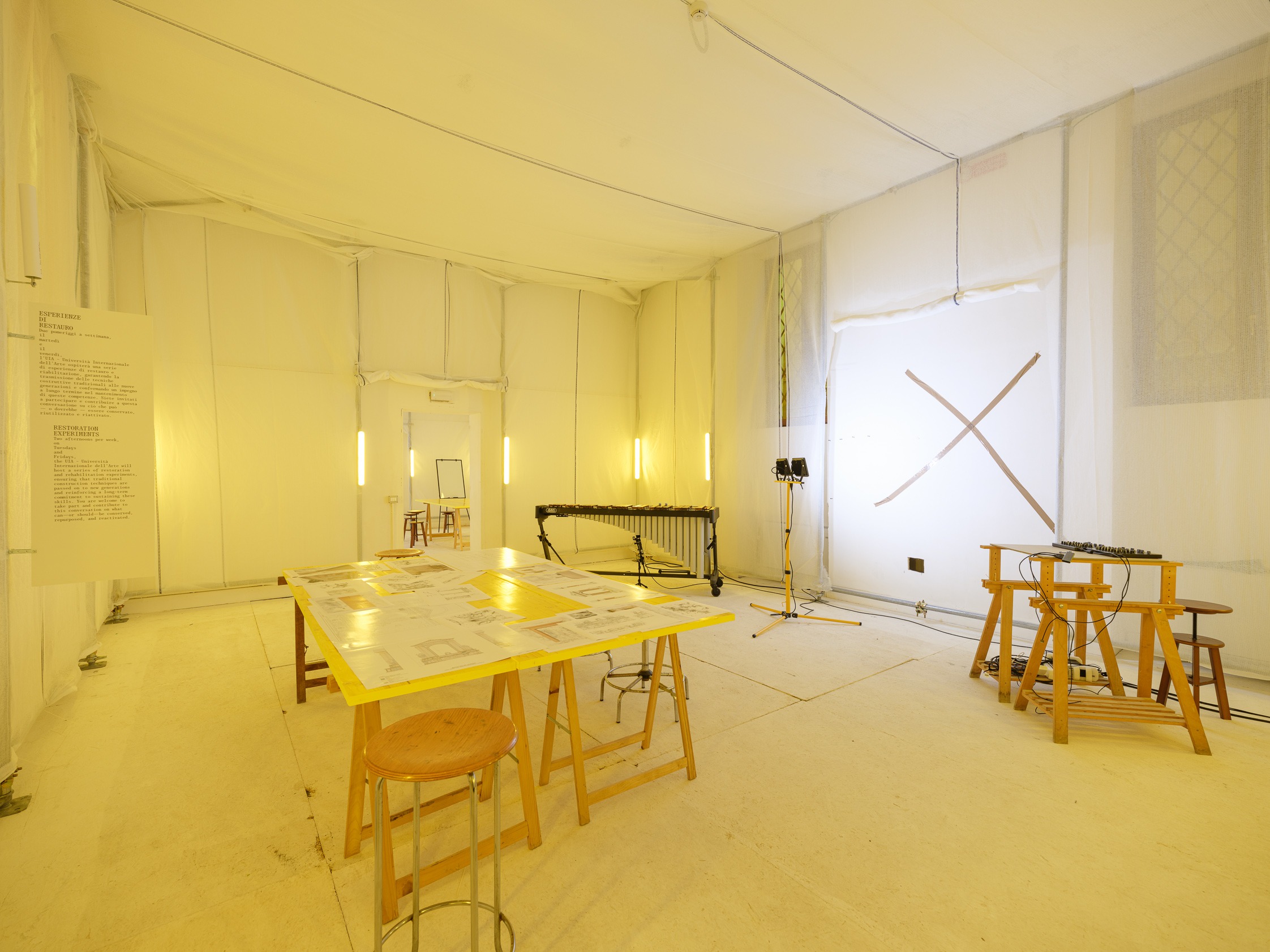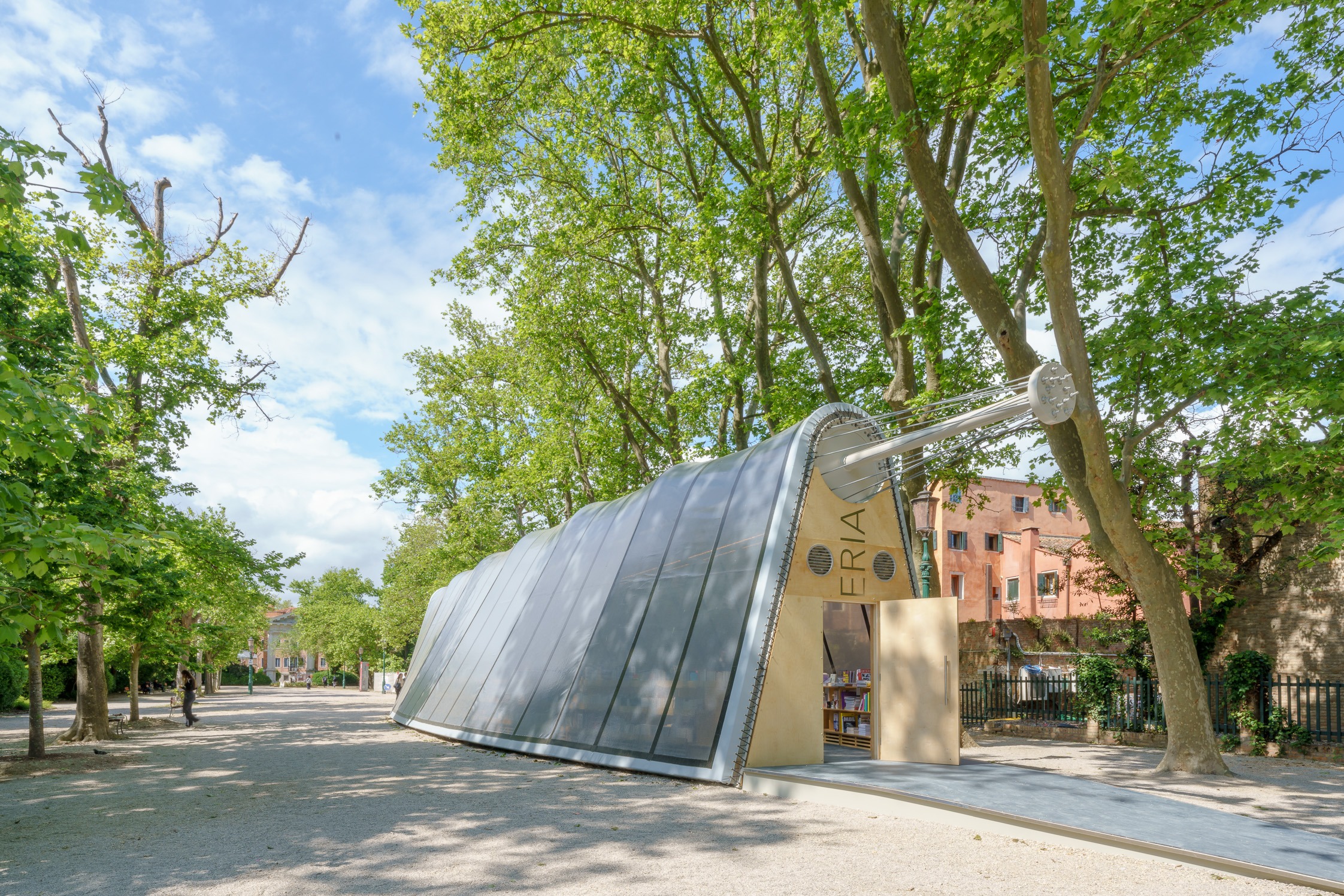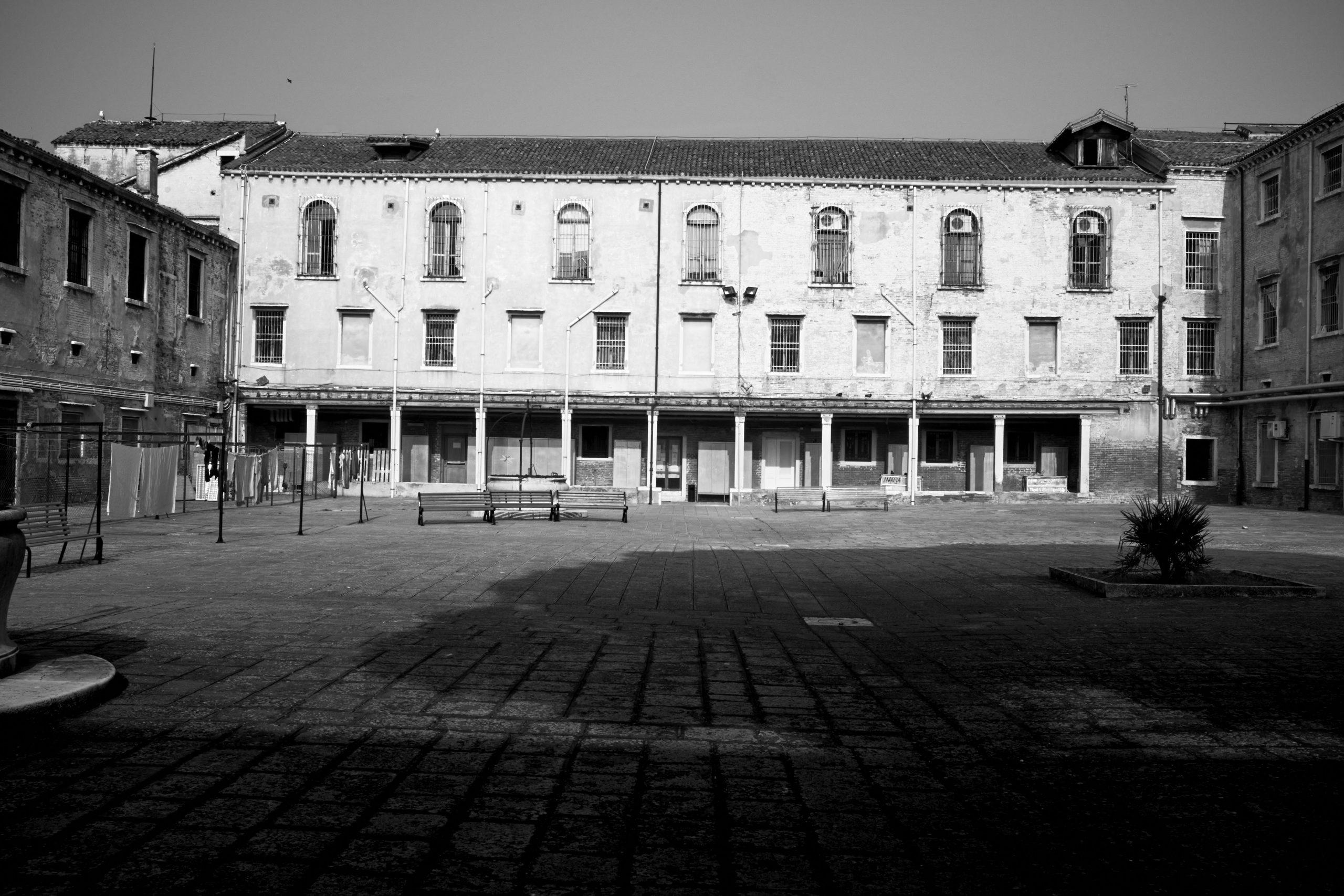From the closure of the Central Pavilion for renovations to the long list of projects included in the International Exhibition at the Corderie and the many events of the “Fuori Biennale”, Pippo Ciorra, Senior Curator of MAXXI Architettura, comments on the 2025 Biennale curated by Carlo Ratti
The first thing to say about this Biennale is a certain air of exceptionality, due to many factors. The first is probably the unusual number of closed pavilions, in many cases for “open-door” restorations, as is the case for the Danish and Holy See pavilions (probably the best), or in any case occupied by projects that speak of the pavilion itself. Aligning themselves with this choice, in addition to the two already mentioned, are the Finnish, Japanese, Brazilian, French, Swiss, and Korean pavilions. Certainly, the decision to close the Central Pavilion (the historic heart of the curator’s exhibition) for works influenced many others, giving rise to this sort of collective impulse to renovate. Also remaining closed, as has been the case for several editions, are the Israeli, Russian, and Venezuelan pavilions. In short, at least as far as the Giardini are concerned, a slightly scaled-down Biennale, only partly compensated for by the beautiful temporary bookshop created by Diller Scofidio & Renfro in the space preceding the ticket offices.
Bucking this trend was the exciting announcement about the creation of the permanent Qatar pavilion in the Giardini, in the empty lot between the American pavilion and the one created by James Stirling in 1991. This is no trifling news. In recent years we have seen pavilions renovated and radically restructured (Australia, Canada), but a completely new pavilion is sensational news, especially if created by a very rich and controversial Middle Eastern country, ready to pay a substantial fee to the Biennale for the rental (thirty years?) of the land. The project will be by Lina Ghotmeh, a Lebanese architect of great fame. We will see in the coming years what effect this further act of cultural diplomacy will have on the Biennale, especially at such a complex moment for global geopolitics.
Two more small considerations before closing. The first concerns the impact of the closure of the Central Pavilion on the curatorial choices. All in all, Ratti could have taken advantage of the stroke of luck of having only one of his exhibition venues and chosen to work with a limited number of authors. Instead, he went in the opposite direction, accumulating authors and projects in the Corderie, arriving at the much [ex]cited list of 700 authors that annoyed many observers. In the end, one remains uncertain whether to interpret his choice as a form of curatorial bulimia, that is, as many examples as possible of contemporary architectural Intelligens, or whether to consider it a consciously provocative act towards the traditional form of the exhibition, here replaced by a sort of repository of ideas little inclined to order or hierarchy, a distant relative of the marvel inaugurated two weeks ago by Elizabeth Diller at the V&A Storehouse.
The last note concerns the unstoppable and disproportionate growth of the “Fuori Biennale”. A brochure by the Ukrainian pavilion lists 158 exhibition initiatives: 68 national pavilions, a dozen official collateral events, 78 other “not only Biennale” exhibitions. Not to mention the myriad side events. An overdose of offerings capable of intimidating even the most cynical of industry insiders. What’s driving it? Probably on the one hand there is the historical “expansionism” of the Biennale, always conquering new spaces. On the other, the only solution the Venetians seem to have found for the progressive depopulation and “musealization” of the city: to musealize even more, transforming every available space into museums, galleries, exhibition-spaces to put on the market.
Pippo Ciorra
BIO
A full professor at SAAD (UNICAM), critic, author and director of the international doctoral programme “Villard d’Honnecourt” at IUAV. Author of books and essays, Pippo Ciorra has published monographic studies on Ludovico Quaroni, Peter Eisenman, contemporary architecture and urban planning. In 2011 he published Senza Architettura. Le ragioni di una crisi, an essay on the condition of architecture in Italy. Other research topics are museums, exhibition culture, the relationships between architecture, politics and art. He is a consultant for the Mies van der Rohe Award for Architecture (member of the jury for 2024) and co-director of the Italian Architecture Award MAXXI-Triennale. Since 2009 he has been the senior curator of MAXXI Architettura in Rome, where he has curated important exhibitions (Re-cycle, The Japanese House, Good News Women in Architecture etc.) and programmes. He is co-founder of Future Architecture Platform (now LINA), a European programme for emerging talents. In 2017-18 he co-directed the interdisciplinary research programme Housing the Human, based in Berlin.
INFO
La Biennale di Venezia
19th International Architecture Exhibition
Intelligens. Natural. Artificial. Collective.
until 23 November 2025
Venice, Giardini, Arsenale e Forte Marghera
https://www.labiennale.org/it


Captions:
19th International Architecture Exhibition of La Biennale di Venezia. Intelligens. Natural. Artificial. Collective. Photo Andrea Avezzù. Courtesy of La Biennale di Venezia
Pavilion of Holy See, “Opera Aperta”, 19th International Architecture Exhibition of La Biennale di Venezia. Intelligens. Natural. Artificial. Collective. Photo Andrea Avezzù. Courtesy of La Biennale di Venezia
La Libreria. Photo Andrea Avezzù, Courtesy of La Biennale di Venezia
Related Articles




